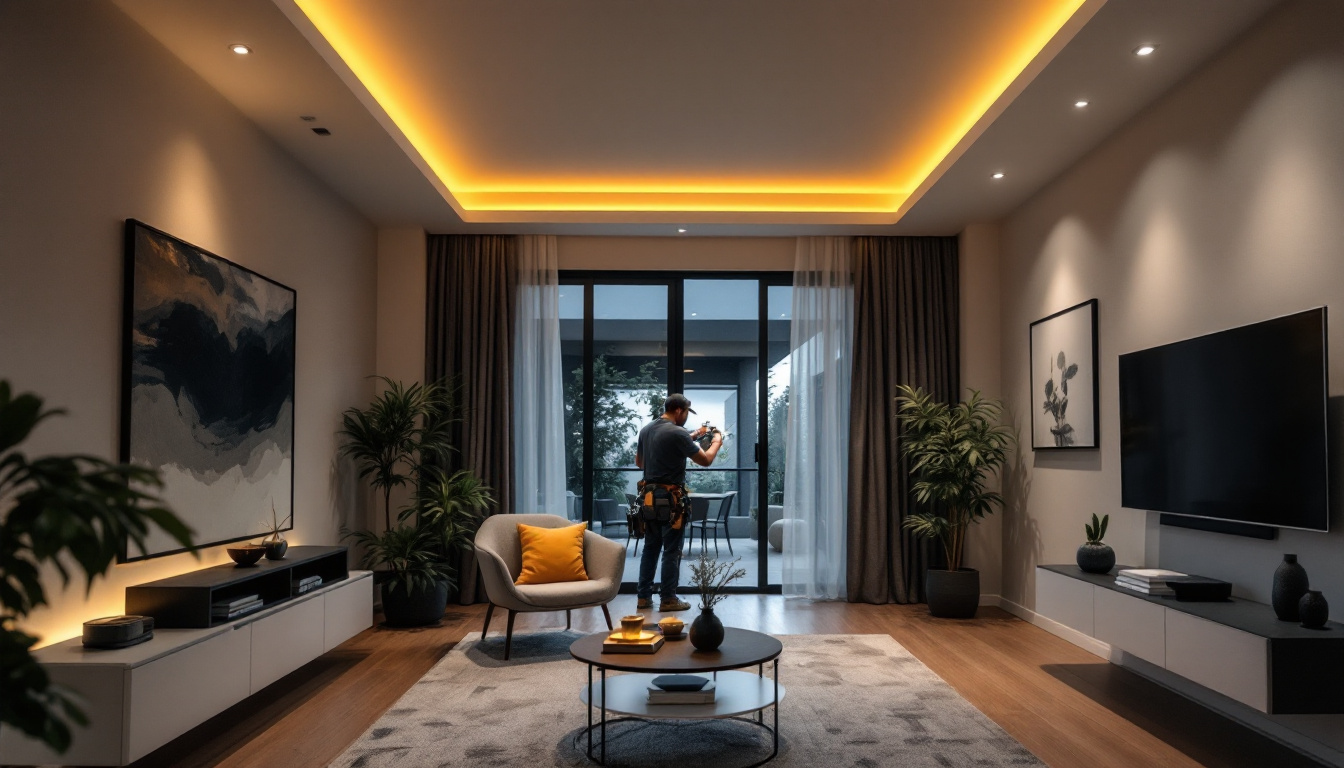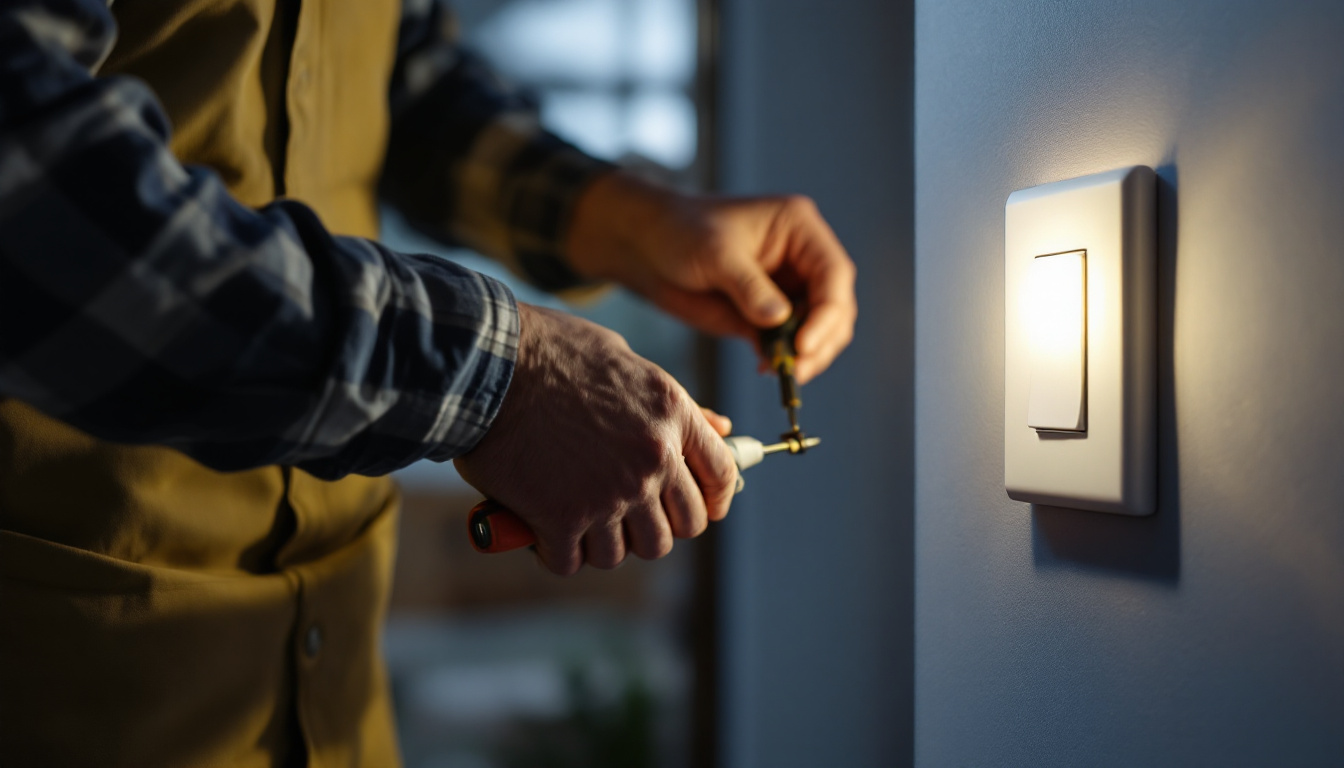
In the world of lighting projects, the electrical box cast is a critical component that often goes unnoticed until it’s too late. For lighting contractors, understanding the nuances of electrical box installation can mean the difference between a successful project and one fraught with costly mistakes. This article aims to provide insights and best practices to help contractors navigate the complexities of electrical box casting, ensuring that lighting installations are both efficient and compliant with safety standards.
Electrical box casting involves the creation and installation of electrical boxes that house wiring connections for lighting fixtures. These boxes are essential for protecting electrical connections and ensuring safety in residential and commercial installations. However, the process can be complicated, and mistakes can lead to significant issues, including electrical hazards and project delays.
Electrical boxes serve multiple purposes in lighting projects. They not only protect wiring connections from physical damage but also help contain any potential electrical fires. Additionally, they provide a secure mounting point for light fixtures, ensuring stability and reliability. Understanding these functions is crucial for contractors to appreciate the importance of proper installation. Furthermore, electrical boxes can also play a role in minimizing electromagnetic interference, which can disrupt the performance of sensitive electronic devices. This is particularly important in environments where precision and reliability are paramount, such as in medical facilities or data centers.
There are various types of electrical boxes available, each designed for specific applications. Common types include:
Choosing the right type of box for the job is essential, as it can impact the overall safety and functionality of the lighting project. Additionally, there are specialized boxes, such as weatherproof boxes, which are designed for outdoor use and can withstand exposure to moisture and extreme temperatures. These boxes are crucial for exterior lighting applications, where durability and safety are paramount. Moreover, some electrical boxes come equipped with features like built-in cable clamps or integrated grounding systems, further enhancing their usability and safety in various installation scenarios. Understanding the full range of options available allows electricians and contractors to make informed decisions that align with the specific needs of their projects.
Despite the importance of electrical boxes, many contractors make common mistakes during installation. Recognizing these pitfalls can help prevent costly errors and ensure a smoother workflow.
One of the most frequent mistakes is selecting the wrong size or type of electrical box. A box that is too small may lead to overcrowding, increasing the risk of overheating and electrical failure. Conversely, an oversized box can be cumbersome and difficult to install. It is essential to assess the project requirements meticulously and choose the appropriate box size and type accordingly. Additionally, different types of boxes are designed for specific applications—such as ceiling fans, wall switches, or outdoor fixtures—so understanding the intended use is crucial. For instance, using a non-weatherproof box outdoors can lead to moisture ingress, which can compromise electrical connections and create hazardous conditions.
Electrical installations are subject to various local codes and regulations that dictate how electrical boxes should be installed. Failing to adhere to these guidelines can result in fines, project delays, and safety hazards. Contractors must familiarize themselves with the relevant codes in their area and ensure compliance throughout the installation process. This includes understanding the National Electrical Code (NEC) as well as any local amendments that may apply. Moreover, staying updated on code changes is vital, as regulations can evolve to address new safety concerns or technological advancements in electrical systems.
Electrical boxes must be securely mounted to support the weight of the fixtures they hold. Inadequate support can lead to sagging or even detachment of the box, posing safety risks. Contractors should ensure that boxes are anchored properly, using appropriate fasteners and techniques to provide the necessary support for the lighting fixtures. Furthermore, it is important to consider the materials of the surrounding structure; for example, mounting a box in drywall requires different techniques than mounting in a wooden stud or concrete. Using the right anchors and screws can make a significant difference in the stability and longevity of the installation. Additionally, contractors should also account for any potential future modifications or upgrades to the electrical system, ensuring that the box can accommodate additional wiring or fixtures without compromising its integrity.
To avoid costly mistakes, contractors should adopt best practices for electrical box installation. These practices not only enhance safety but also improve the overall quality of the lighting project.
Before beginning any installation, thorough planning is essential. This includes assessing the layout of the space, determining the number of fixtures required, and identifying the best locations for electrical boxes. A well-thought-out plan can help prevent last-minute changes and ensure that all components fit together seamlessly. Additionally, considering future modifications or expansions during the planning phase can save time and resources later on. For instance, if a contractor anticipates the need for additional outlets or fixtures in the future, integrating extra capacity into the initial design can simplify later upgrades.
Investing in high-quality electrical boxes and accessories can pay off in the long run. Cheap materials may save money upfront but can lead to failures and safety hazards down the line. Contractors should prioritize quality over cost, selecting boxes that meet safety standards and are suitable for the intended application. Furthermore, using materials that are resistant to environmental factors, such as moisture or extreme temperatures, can significantly extend the lifespan of the installation. For example, in areas prone to humidity, opting for weatherproof electrical boxes can prevent corrosion and ensure reliable performance over time.
Once the electrical box is installed and connections are made, it is crucial to test the connections before sealing everything up. This step ensures that all wiring is correctly connected and functioning as intended. Taking the time to perform this check can prevent future troubleshooting and save valuable time and resources. In addition to visual inspections, using a multimeter to verify voltage and continuity can provide an extra layer of assurance. This practice not only enhances safety but also builds confidence in the integrity of the installation, allowing contractors to provide clients with peace of mind regarding their electrical systems.
Every lighting project comes with its own set of challenges, and electrical box casting is no exception. Contractors must be prepared to address unique issues that may arise during installation.
In many residential and commercial settings, space can be limited, making electrical box installation challenging. In such cases, contractors may need to employ specialized tools or techniques to navigate tight areas. Utilizing old work boxes or flexible conduit can help facilitate installation in confined spaces.
When retrofitting lighting in older buildings, contractors may encounter existing electrical infrastructure that complicates installation. Understanding how to work with outdated wiring systems and integrating new electrical boxes without compromising safety is essential. Conducting a thorough assessment of the existing infrastructure can help identify potential challenges and inform the installation process.
Client preferences can also impact electrical box installation. Some clients may have specific aesthetic requirements or preferences for fixture placement. Contractors must balance these preferences with safety and functionality, ensuring that all installations meet both the client’s vision and industry standards.
Safety should always be a top priority in electrical box casting. Contractors must adhere to best practices and regulations to ensure the safety of both workers and end-users.
Contractors should always wear appropriate personal protective equipment (PPE) when working with electrical installations. This includes gloves, safety glasses, and hard hats to protect against potential hazards. Ensuring that all team members are equipped with the necessary PPE can significantly reduce the risk of accidents on the job site.
Implementing lockout/tagout procedures is essential when working on electrical systems. This practice ensures that all power sources are properly shut off and secured before any work begins. By following these procedures, contractors can protect themselves and their team from electrical shock and other hazards.
Conducting regular safety training sessions for all team members can help reinforce the importance of safety in electrical box casting. Training should cover topics such as proper installation techniques, hazard recognition, and emergency response protocols. A well-trained team is better equipped to handle challenges and maintain a safe working environment.
Electrical box casting is a fundamental aspect of lighting projects that requires careful attention to detail and adherence to best practices. By understanding the common mistakes, implementing best practices, and prioritizing safety, lighting contractors can avoid costly errors and ensure successful installations. As the industry continues to evolve, staying informed about new materials, techniques, and regulations will further enhance the quality and safety of electrical box installations.
Ultimately, a commitment to excellence in electrical box casting not only benefits contractors but also contributes to the overall success of lighting projects, fostering satisfied clients and a strong reputation in the industry.
Ready to elevate your lighting projects with the highest quality materials? Look no further than LumenWholesale for all your electrical box casting needs. Our spec-grade lighting products are designed to meet the rigorous demands of any project, ensuring you deliver excellence every time. With unbeatable wholesale prices and the convenience of free shipping on bulk orders, you can trust us to provide the best value without any hidden costs. Don’t let inflated markups affect your bottom line. Choose LumenWholesale for reliable, high-performance lighting solutions that blend quality, affordability, and convenience. Wholesale Lighting at the Best Value is just a click away.

Discover expert tips and insights on incorporating vanity LED lights into your projects.

Discover how incorporating flush mount can lights into your projects can elevate your lighting business.

Discover the essential insights lighting contractors need to meet client expectations in the ever-evolving industry.

Discover the essential insights lighting contractors need to know about single pole switches.